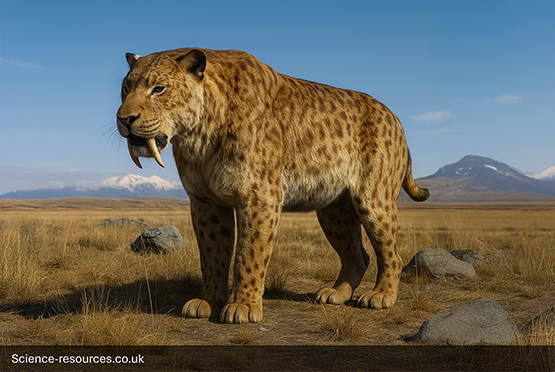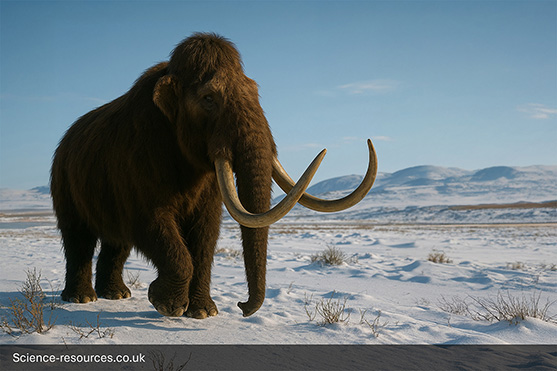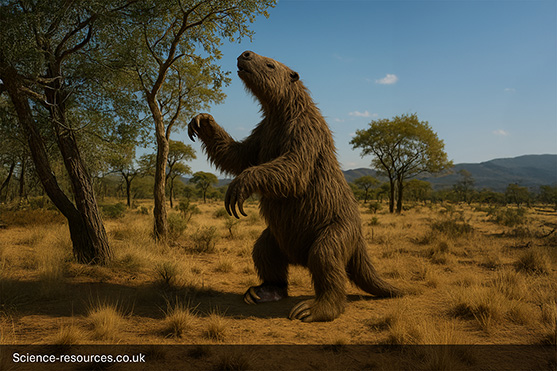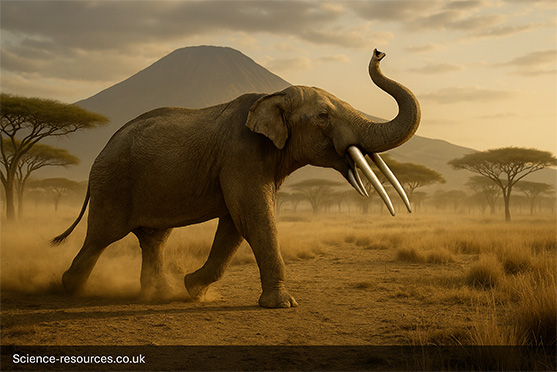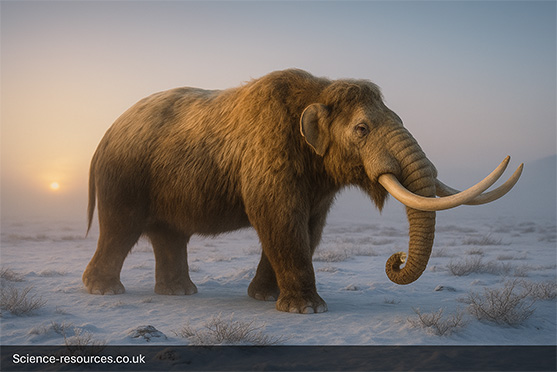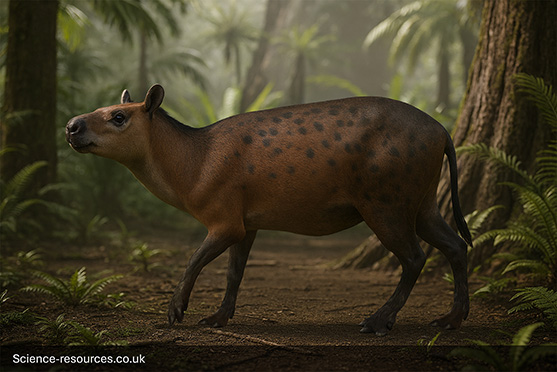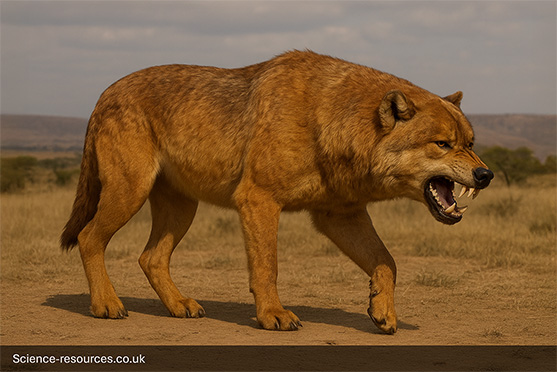Last updated: 4th August 2025
Where They Lived: North America
Extinct Animals of North America
North America was a land of incredible megafauna during the Pleistocene Ice Age. The continent was home to a variety of large animals that adapted to its diverse climates, from the cold, glacial regions to the warmer southern plains.
The Great American Interchange, a major event in the Pliocene and Pleistocene, also introduced new species from South America, adding to the richness of North America's prehistoric wildlife. Iconic creatures like the Saber-toothed Cat (Smilodon) and the Woolly Mammoth roamed this land, coexisting with early humans.
The fossil record in places like the La Brea Tar Pits in California gives us a stunningly detailed picture of the predators and prey that once dominated this continent.
Featured animals from this location:
Smilodon
Smilodon was a powerful saber-toothed cat that lived in the Americas during the Ice Age. It had massive forelimbs and long, curved canine teeth, which it used to take down large prey.
Woolly Mammoth
Woolly Mammoths were a giant, shaggy elephants that lived during the Pleistocene. they had long, curved tusks and a thick coat of fur, helping them survive in icy environments across Eurasia and North America.
Megatherium
Megatherium was a giant ground sloth from South America that lived during the Pleistocene. It had massive claws and a bulky frame, feeding on leaves and possibly standing upright to reach higher branches.
Gomphothere
Gomphothere was a large, elephant-like mammal that roamed the Americas during the Ice Age. It had a long trunk and distinctive tusks, which it used to dig for roots and strip bark from trees. Unlike modern elephants, some species had four tusks and a flatter skull, helping them adapt to diverse environments.
Mastodon
Mastodon was a shaggy, elephant-like mammal that lived across North America during the Ice Age. It had straight tusks and a low, sloping skull, which helped it browse on shrubs and trees. Unlike mammoths, mastodons had cusped teeth suited for chewing tough vegetation in forested environments.
Eohippus
Eohippus was one of the earliest known horse ancestors, living in North America during the early Eocene. The size of a small dog, Eohippus had multiple toes and a lightly built frame, adapted for forested environments. Its diet of soft vegetation and agility made it a successful browser in its ancient ecosystem.
Dire wolf
Dire Wolf was one of the largest canid predators of the Ice Age, roaming North and South America during the Late Pleistocene. With a robust frame, massive skull, and crushing bite force, it was a formidable hunter and likely a dominant pack scavenger in its ecosystem.
Basilosaurus
Basilosaurus was a gigantic prehistoric whale that swam in the world’s oceans millions of years ago. It was one of the first fully aquatic whales and a top predator during its time.
You may also be intrested in:
© 2012 science-resources.co.uk. All rights reserved | Design by W3layouts
Where They Lived: North America
Extinct Animals of North America
North America was a land of incredible megafauna during the Pleistocene Ice Age. The continent was home to a variety of large animals that adapted to its diverse climates, from the cold, glacial regions to the warmer southern plains.
The Great American Interchange, a major event in the Pliocene and Pleistocene, also introduced new species from South America, adding to the richness of North America's prehistoric wildlife. Iconic creatures like the Saber-toothed Cat (Smilodon) and the Woolly Mammoth roamed this land, coexisting with early humans.
The fossil record in places like the La Brea Tar Pits in California gives us a stunningly detailed picture of the predators and prey that once dominated this continent.
Featured animals from this location:
Smilodon
Smilodon was a powerful saber-toothed cat that lived in the Americas during the Ice Age. It had massive forelimbs and long, curved canine teeth, which it used to take down large prey.
Woolly Mammoth
Woolly Mammoths were a giant, shaggy elephants that lived during the Pleistocene. they had long, curved tusks and a thick coat of fur, helping them survive in icy environments across Eurasia and North America.
Megatherium
Megatherium was a giant ground sloth from South America that lived during the Pleistocene. It had massive claws and a bulky frame, feeding on leaves and possibly standing upright to reach higher branches.
Gomphothere
Gomphothere was a large, elephant-like mammal that roamed the Americas during the Ice Age. It had a long trunk and distinctive tusks, which it used to dig for roots and strip bark from trees. Unlike modern elephants, some species had four tusks and a flatter skull, helping them adapt to diverse environments.
Mastodon
Mastodon was a shaggy, elephant-like mammal that lived across North America during the Ice Age. It had straight tusks and a low, sloping skull, which helped it browse on shrubs and trees. Unlike mammoths, mastodons had cusped teeth suited for chewing tough vegetation in forested environments.
Eohippus
Eohippus was one of the earliest known horse ancestors, living in North America during the early Eocene. The size of a small dog, Eohippus had multiple toes and a lightly built frame, adapted for forested environments. Its diet of soft vegetation and agility made it a successful browser in its ancient ecosystem.
Dire wolf
Dire Wolf was one of the largest canid predators of the Ice Age, roaming North and South America during the Late Pleistocene. With a robust frame, massive skull, and crushing bite force, it was a formidable hunter and likely a dominant pack scavenger in its ecosystem.
Basilosaurus
Basilosaurus was a gigantic prehistoric whale that swam in the world’s oceans millions of years ago. It was one of the first fully aquatic whales and a top predator during its time.
© 2012 science-resources.co.uk. All rights reserved | Design by W3layouts
